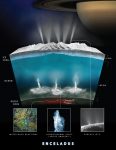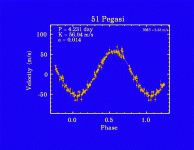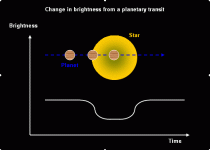Now that I’m finally over the Fanfest hangover, I can talk more about what was, for me, one of the most exciting presentations of the event: the new director for the citizen science program, Project Discovery. CCP announced back in February that they were planning on a new mission for the Project after the huge success of the recent biology mission identifying protein distribution in human cells.
The next mission capsuleers will be tasked with is all about exploration, a subject I’m sure many of you are familiar with. Only it’s all about finding exoplanets, which, as anyone who knows me can tell you, is my favourite thing! As an astrobiologist, its the closest thing to real life Star Trek that you can get.
Before I get to the part as to how we do it, lets have a little of the why you should be getting involved and helping us. Just yesterday, NASA announced confirmation of the composition of Saturn’s moon Enceladus’ plumes by the Cassini mission. The chemicals found are exactly what we were hoping for; chemicals that life as we know it can feed from. This confirmation strongly points to the same processes occurring on all of the icy worlds of our Solar System. Think about that for a second. Even Pluto?
Credits: NASA
Even Earth has a subsurface ocean. Our planet even had a liquid ocean a mere 100 million years after its formation. So did Mars, which may well have its own subsurface ocean. Any of you who read my regular columns know that we astrobiologists use our scientific dowsing rods to hunt for water all the time! There’s a lot of it, after all hydrogen is the most abundant molecule around; stars, or any of us, wouldn’t exist without it. Oxygen and the other elements that life needs are formed via stellar nucleosynthesis when stars die.

Credits: NASA/JPL-Caltech
Cassini was never designed to look for life, but it gave us clues, so we definitely need a closer look. The above graphic relates to the black smokers we have on Earth. The current thinking in the science community is that this may well be how life started on our planet. Earth did not start out a friendly place to us, the atmosphere began much like my lungs felt Sunday morning after Fanfest ended. Early life liked methane, sulfur and the start of your worst hangover.
I can hear you ask, ‘So what does that have to do with Project Discovery Exoplanets?’ Excellent question! First, find your planet. As to how we look for them is well covered in Michel Mayor’s fanfest prestentation. He’s a fantastic scientist with his team including Didier Queloz. I had the great privilege of studying with them several years ago, I certainly hope that they inspired you as much as it inspired me. I do know that I saw some people trying to absorb a load of technical hard science a little too fast after the Pub Crawl. I will do my best to make it less confusing.
He mentioned Doppler spectroscopy, or the radial velocity method which is how the Geneva team discovered 51 Pegasi, the first confirmed exoplanet back in 1995. This method can establish a planet’s minimum mass as it peturbates the movement of its host star. Everything wobbles gravitationally through blue and redshifts which we can pick up.

There’s a great story to read around the discovery of this planet by the Pale Red Dot team if your mind isn’t mush already.
Transit photometry is the other way we look for exoplanets, it relies on the line of sight detection of a dip in the light emitted from the star it orbits, or a ‘light curve’ as we call it. This method can tell us a lot about a planet’s mass and what may be in its atmosphere. I hope you’re seeing where I’m going here. Ideally, you have an instrument that can measure a planet’s transit, and another that can measure its radial velocity. That way we have its mass, radius and atmosmpheric composition. With the upcoming James Webb Space Telescope and the Transiting Exoplanet Survey Satelitte, we’re getting there.



